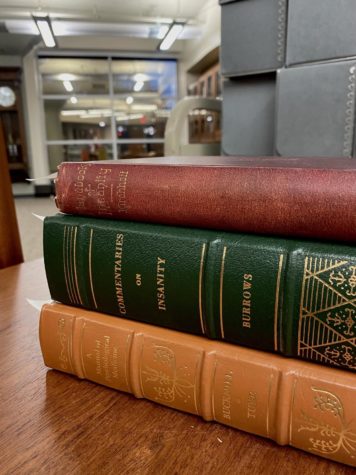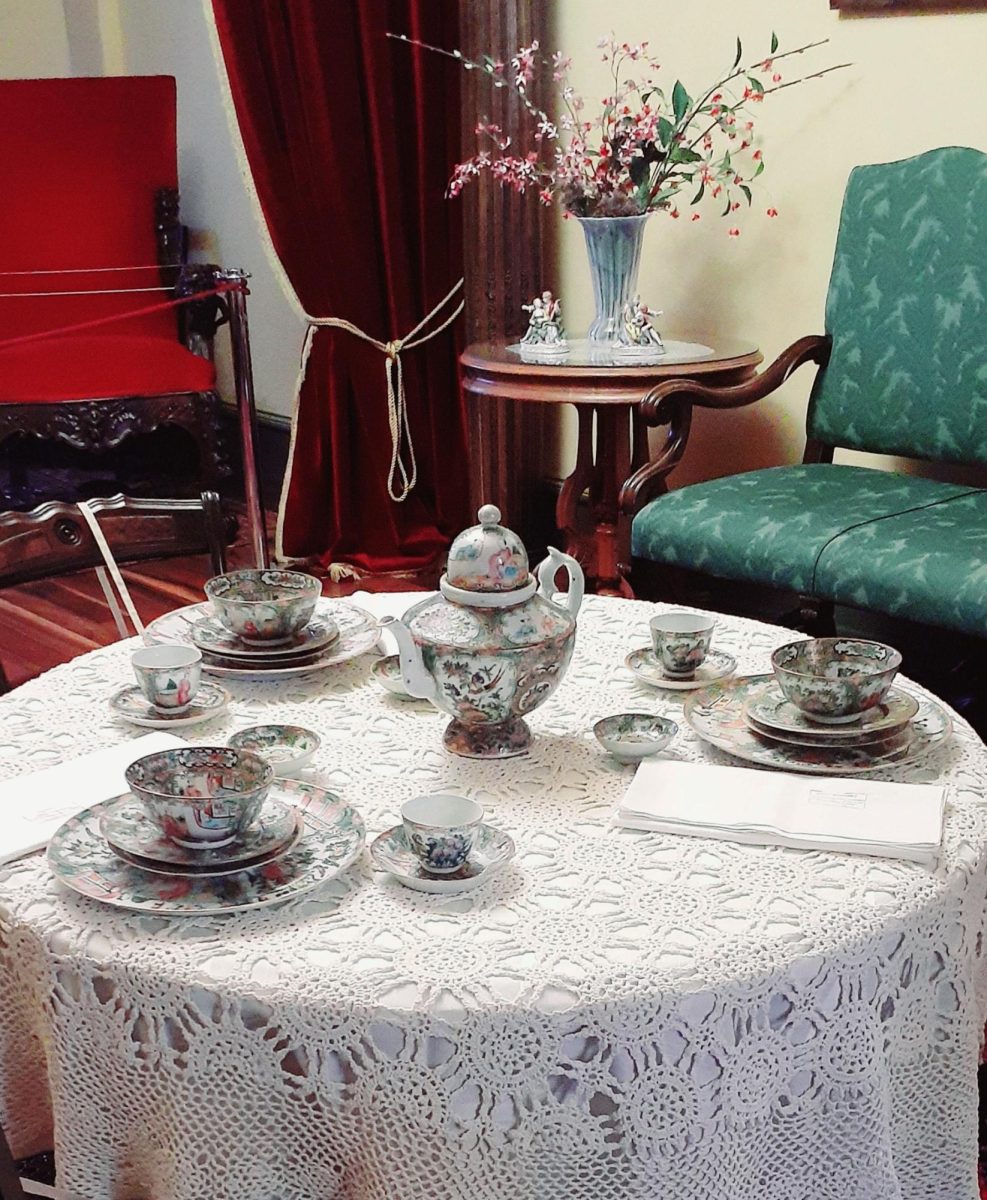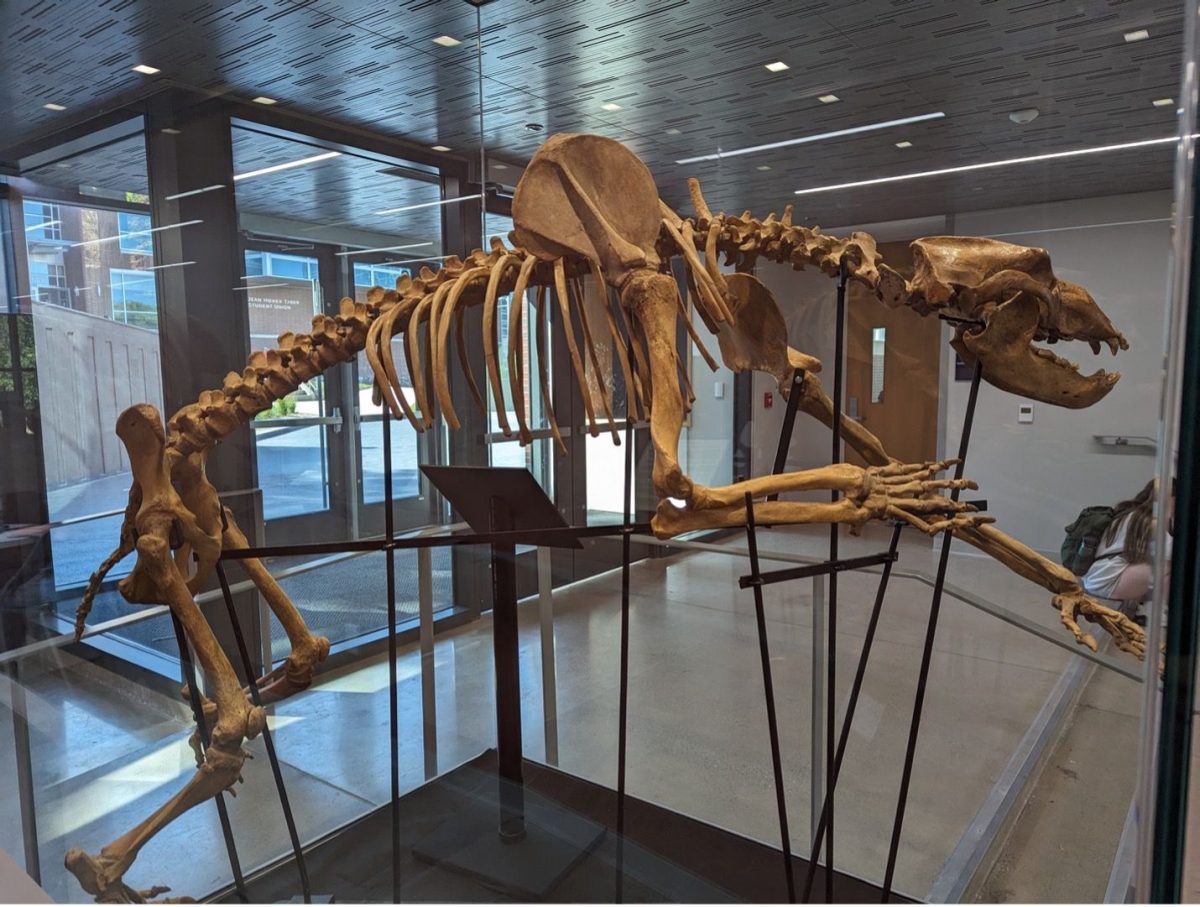The Cummings Center Museum Experience
Image from the Cummings Center
December 13, 2021
Just a few years ago, the Drs. Nicholas and Dorothy Cummings Center for the History of Psychology opened a new feature on its first floor. The museum is a hidden gem that displays all its facets for students to witness and learn from.
With wood floors and warmly painted walls, the environment delivers a calming effect akin to that a psychiatrist hopes to instill in their sessions, making for the perfect setting to learn.

This winding path of psychology’s strides and missteps decorates each wall and corner of its sections with information and artifacts.
Just right of the main lobby sits the museum’s entrance. Once inside, guests are confronted with three animated-information-graphics with attention gripping facts, like the creator of Wonder Woman being the inventor of the lie–detector test. This brings guests to the museum’s first section, Psychology as a Profession. In this area, the walls are lined with psychology’s timeline, displaying the practice’s development. Here, one can find an early straight jacket, and even take pictures in a classic therapist’s sofa with a picture of Sigmund Freud looming over you.
Right around the corner, after a quick sit to watch some movie clips, guests enter the Psychological Assessing Section and come across the museum’s first interactive exhibit. Modeled after real tests used in immigration hubs like Ellis Island designed for measuring intelligence use without language, you can assess your intelligence based on these dated methods.
Tucked in the museum’s corner is the smallest section, Psychology as Used in Industry. In this little pocket, the walls are lined with the history of the subject’s main contributors like Harry Hollingworth with his work on the effectiveness of firearms advertisements. The main attraction is an efficiency test modeled after one designed by Alfred Binet. There’s also a little side exhibit of a stereoscope and its inventor Charles Wheatstone.
Leaving the third section, guests walk back through the testing section and enter Psychology as an Agent of Social Change. The most eye-catching feature of this section is its use of video data. Two display screens hang from the walls, one showing interviews of children describing their favorite dolls as part of a study into the sense of inferiority Black children were forced to adopt as a result of societal racism specifically, during Brown v. Board. The other is of several children beating an inflatable clown doll in a study of child psychology as effected by violent media. They even have a miniature version of the doll in question.
The penultimate section is a sight to behold. Taking up most of the museum, Psychology as a Science exists in several rooms with subsections like The Stanford Prison Experiment and animal linguistic training. With the largest collection of subject-specific artifacts, you can look at the rusty relics of psychology’s achievements and sordid past.
Interactivity is perhaps the most important aspect of the final section. In What it Means to be Human, guests have their mental confidence challenged before being asked to answer the question ‘what makes a human’ and hanging their answers on lines of metal wire and leaving with a few thoughts on their mind.
Overall, the museum is a wonderful addition to what the campus has to offer. It creates a relaxing environment that encourages guests to follow at their own pace and take in all they can, not only leaving with information concerning the past, but planting the seeds of questions regarding the future as well.













John Bennetts • Dec 14, 2021 at 11:18 AM
Interesting!